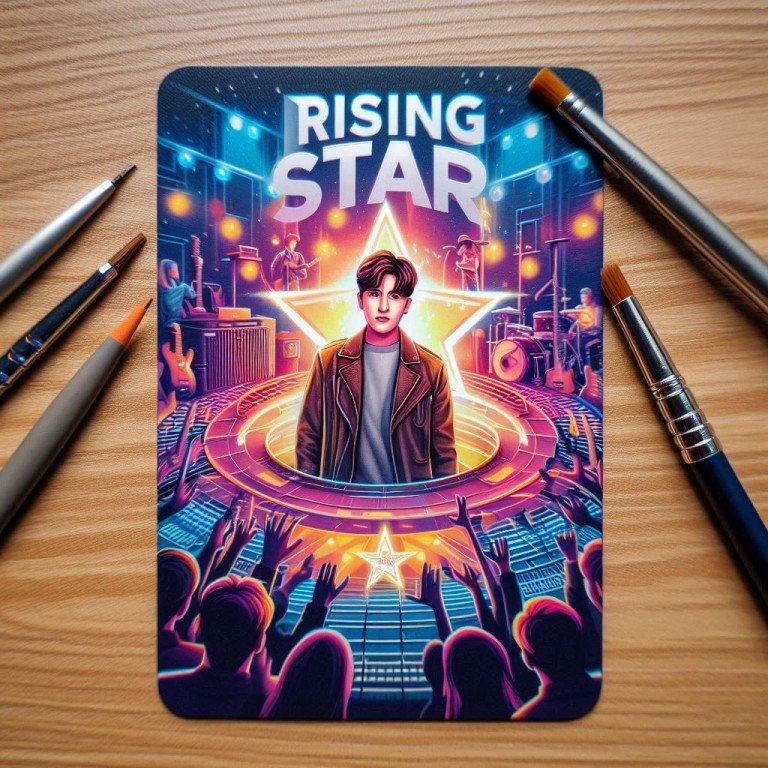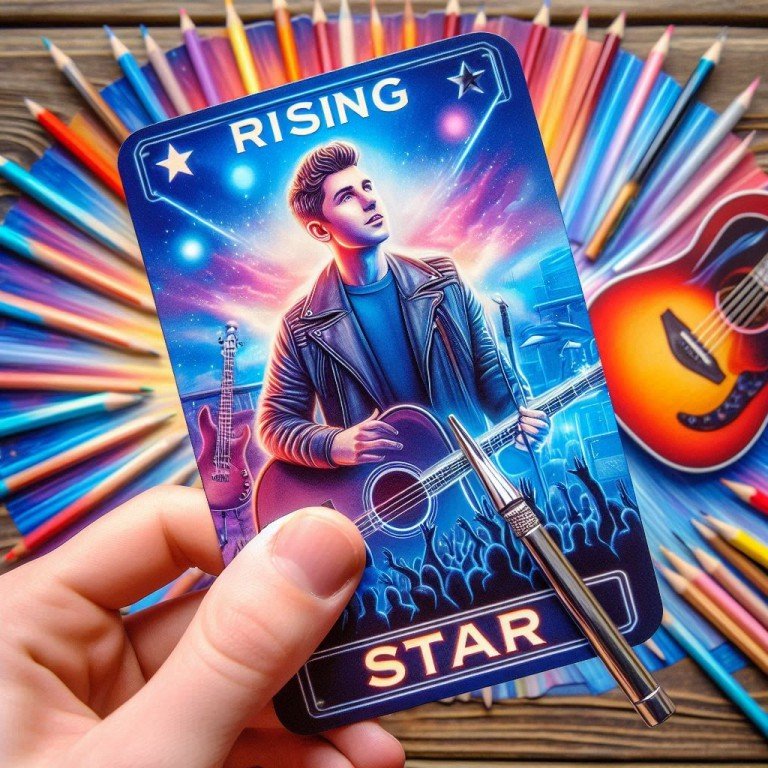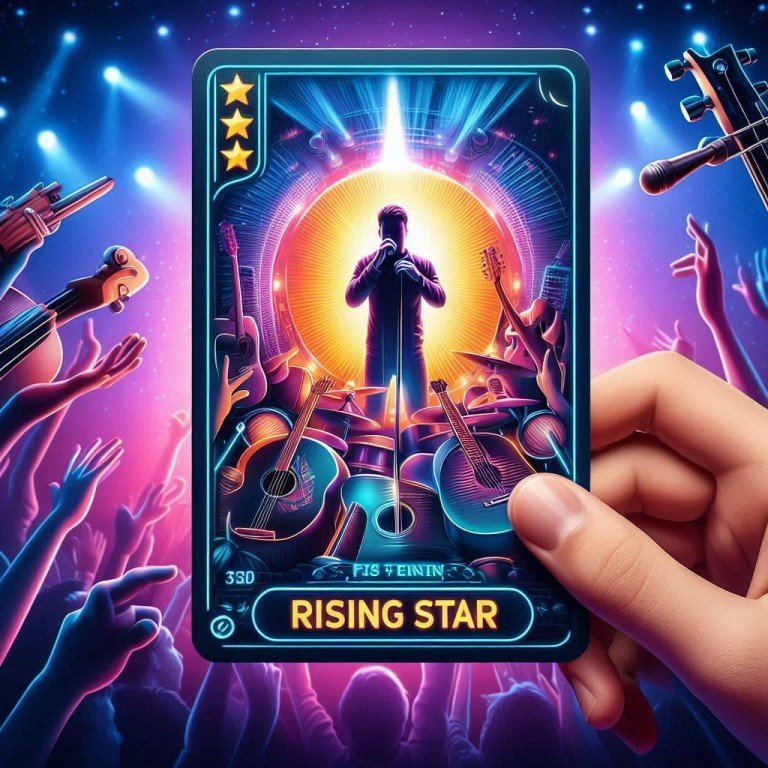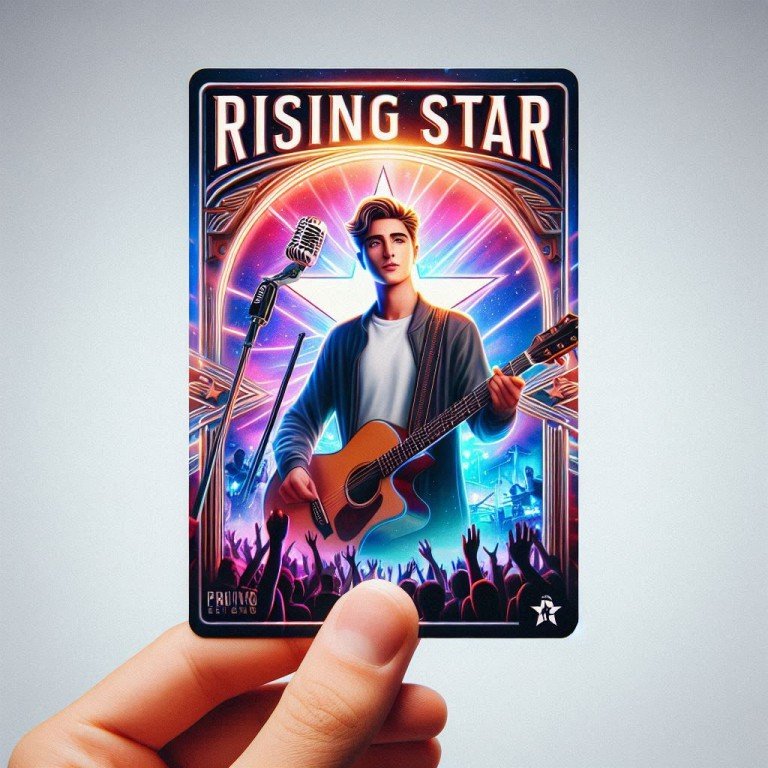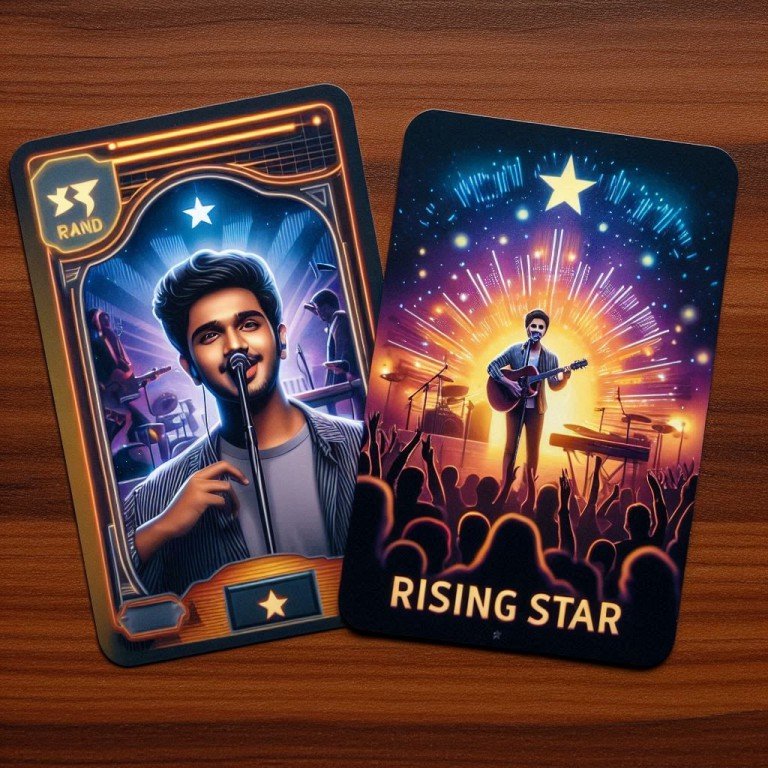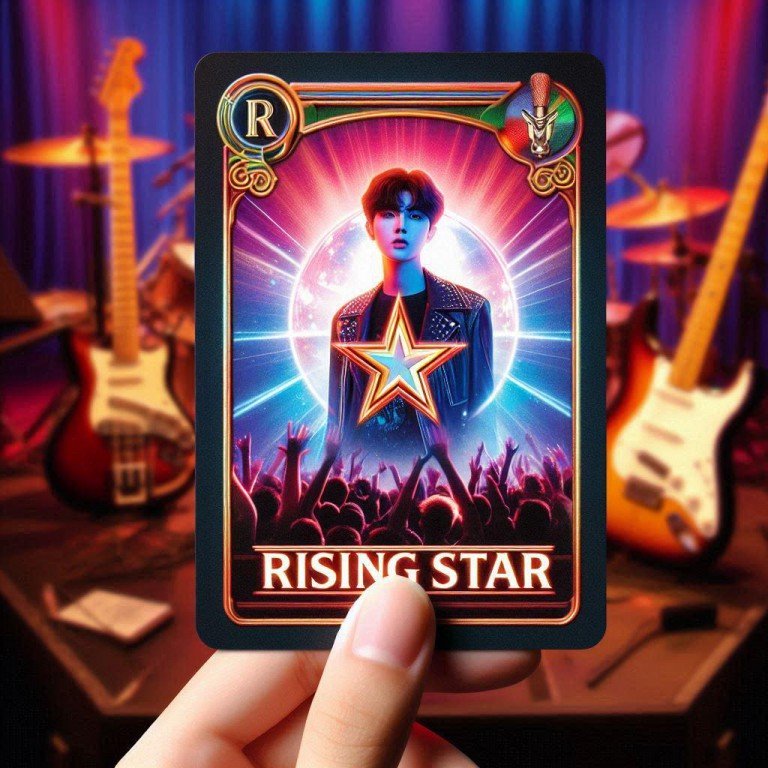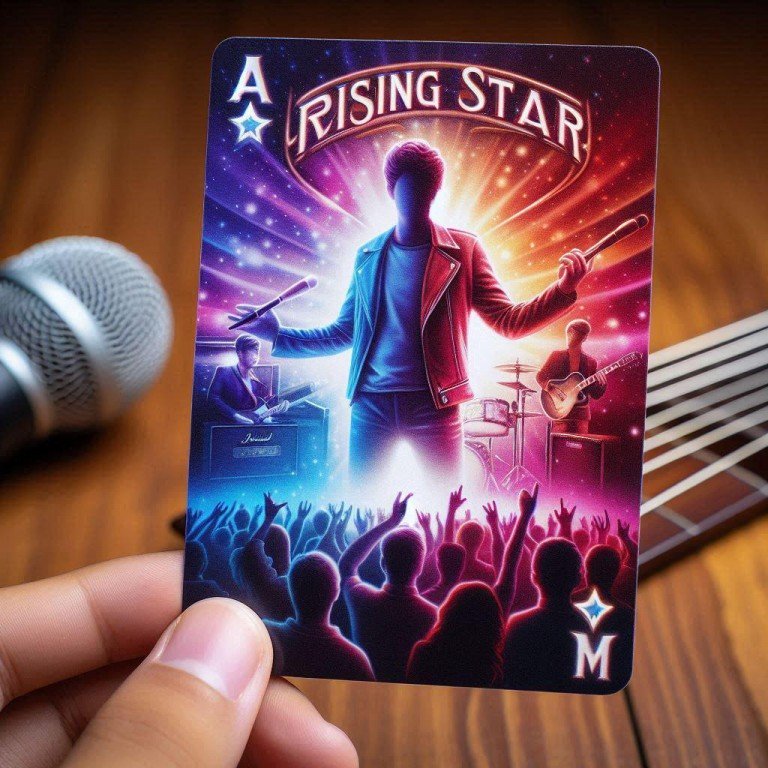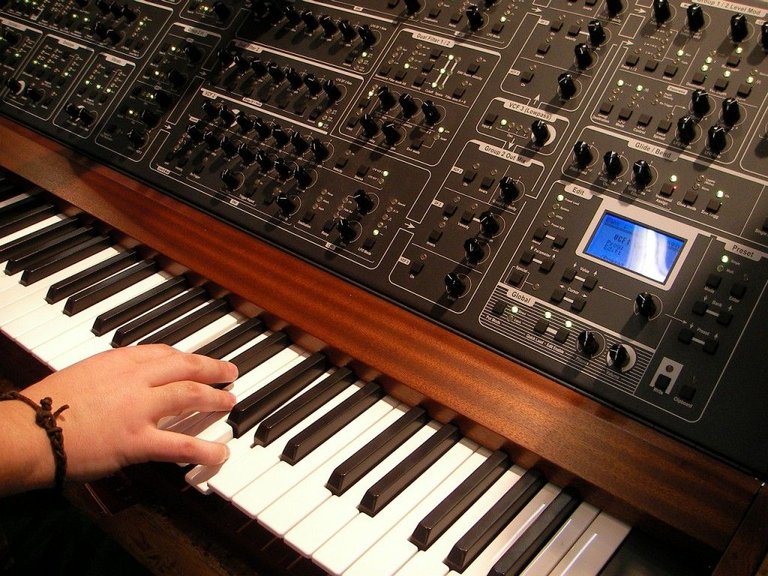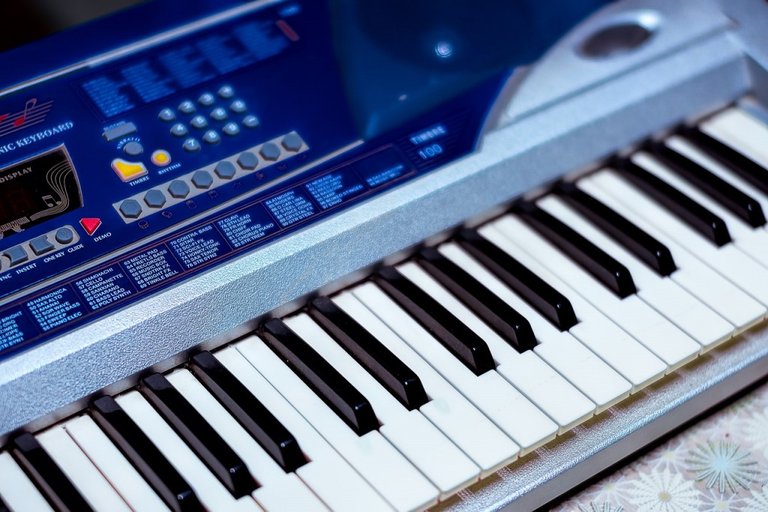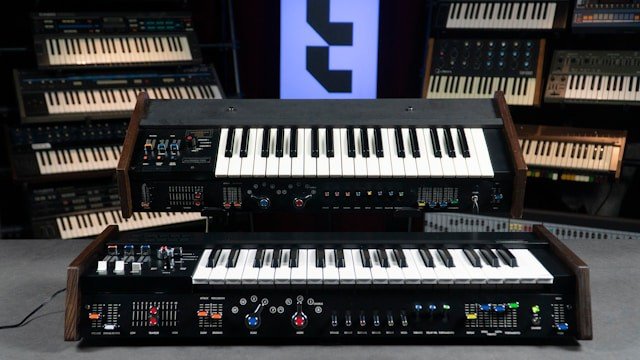Greetings to all my dear Rising Star friends, today I am very happy to share with you a new article on my blog. I want to tell you some interesting facts about a very interesting instrument, I am referring to the Synthesizer. And, as usual, at the end of the post I will present you some fan art that I have created, inspired by our beloved game, Rising Star. Without further ado, let's begin.
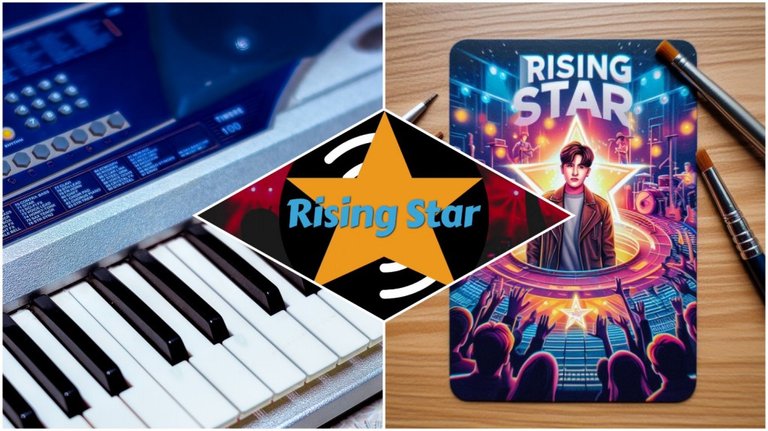
Source: Canva
Well, my friends, first things first, what is a synthesizer? Well, I'll tell you that it's basically a device that creates electronic sounds. Imagine that you have a magic console😀, so to speak, that can make any sound you can think of, from the roar of a lion to the beeping of a robot. As well as imitate the sound of other instruments. Well, that's what it is in essence. That's how crazy but interesting it is 😀.
The history of these gadgets begins around the 1920s, when a guy named Léon Theremin invented the Theremin. This little device was super weird because you could play it without actually touching it. You just moved your hands near some antennas and that was it. Obviously it's not that simple, but you get my drift 😀.
The real hype started in the 60s with a genius named Robert Moog. This guy created the Moog Synthesizer in 1964. Not only did this thing make much better sounds than the previous one, but it was also played with a keyboard, like a futuristic piano back then. Of course, for us today it's normal, but for them it was something super new.
Then in the 70s, synthesizers became more compact and accessible, thanks to transistor technology. Models like the Minimoog and the ARP 2600 became the stars of progressive rock and experimental music. By the 80s, with the arrival of digital synthesizers like the Yamaha DX7, things got even more interesting. This little device used FM synthesis, which allowed it to make sounds that had never been heard before.
The joke of a synthesizer is that it generates and manipulates electrical signals to produce sound. These signals go through oscillators (which create different types of waves), filters, amplifiers and modulators, all controlled by a keyboard and a bunch of knobs and buttons. It's like you're cooking up sounds in a lab 😀. I know it's a bit confusing to understand, even for me 😀 who's writing the article.
There are several types of synthesizers, each with its own flow, for example I'll mention some of the most famous ones: analog synthesizers, digital synthesizers, modular synthesizers, hybrid synthesizers, among many others. If we wanted to see them all, we'd need another article. 😀
Fun facts about synthesizers
Did you know that in the 60s NASA used synthesizers to study sounds from space? No joke. They used these devices to analyze radio signals and electromagnetic waves from outer space. Crazy but true. Mind you, this one was specifically designed for that purpose.
In the 70s, the Polymoog was not only popular among musicians, but also among fashion designers. It became famous for its use in haute couture fashion shows, where its unique sound helped create atmospheres that were, shall we say, classy.
The Roland TB-303 is a small synthesizer that was originally designed to imitate the sound of bass guitar, but it didn't catch on much in its time. However, in the 80s, DJs and electronic music producers rediscovered it and used it to create the distinctive sound of Acid House. As we say around here, it was late to the party. Better late than never, right?
The Fairlight CMI was one of the first synthesizers that allowed you to record and play back real sounds. Thanks to this little thing, artists like Peter Gabriel and Kate Bush were able to take their productions to the next level, mixing real sounds with synthesized ones. The music of the future back then.
Rising Star Fan Art
Now, changing the subject, I present my post #75 about some of the fan art I've made with the help of DALL-E, inspired by our beloved game, Rising Star. In this post, I've used the card theme again along with several elements of the game. For example, I've added the star, some instruments and singers to give more personality to the images. Some of the images also have futuristic and retro touches, and I've added stages and concerts to give it a special touch.
The images are free to use, so you can use them from this post without any problem. I reiterate that they have been made by me with the help of DALL-E.
I hope you enjoyed this journey through the history and curiosities of the synthesizers. And that you liked the fan art. See you in a new post. Until next time friends, greetings to all.
